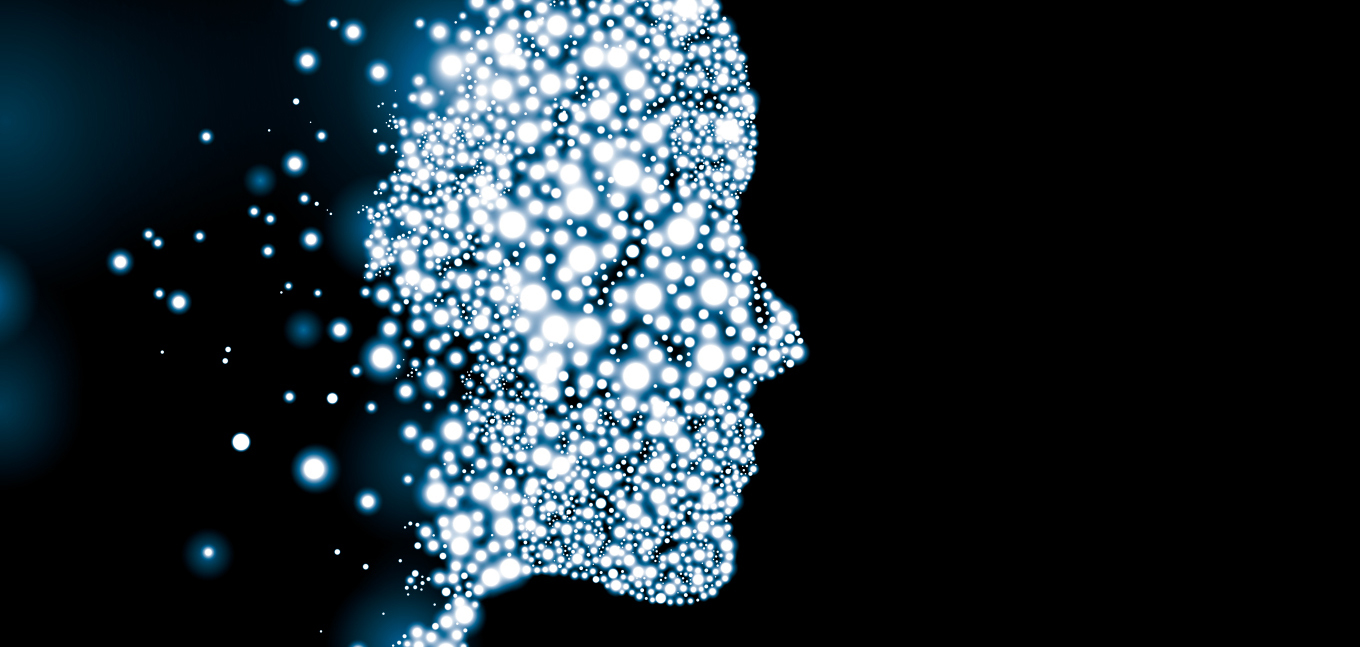
Artificial Intelligence in Digital Health: A Consumer Application
Diagnosis – the identification of the nature of an illness or other problem by examination of the symptoms.
Healthcare is the ultimate data science problem. The model works by collecting as much information about the patient, symptoms and special tests, then comparing these against known disease models to find the right diagnosis which then inevitably leads to the correct solution. Most patients have a distrust of very young doctors and instinctively like older clinicians – why is this? This is because patients want to see a doctor that has seen it all before and so they are more practiced with a greater understanding of the condition they have.
This experience translates into
a) Better diagnosis
b) Better treatment planning
c) Better treatment outcomes.
BUT getting the right number of specially trained doctors is hard enough, then having the right number with the right experience available where you are when you can access them and we are starting to scratch the surface of why many people can’t access the care they want.
Introducing the A.I Orthodontist.
The goal here is to use A.I to help dentists / orthodontists use their time even more effectively to help them monitor treatment progress and help them know where to spend their attention on the cases that need their ingenuity and not distract them with all other cases progressing as planned which require no intervention. This provides the clinician with augmented diagnostic & supervisory abilities and greatly increases the number of patients he can help. So let’s re-examine this. Orthodontics is concerned with the position & arrangement of teeth.
This means the diagnosis is conducted by undertaking visual assessments of the smile and visual assessments of the spatial relationships of the teeth – this means orthodontics is essentially a computer vision problem and therefore we can use technology to help solve it so let’s look at this:
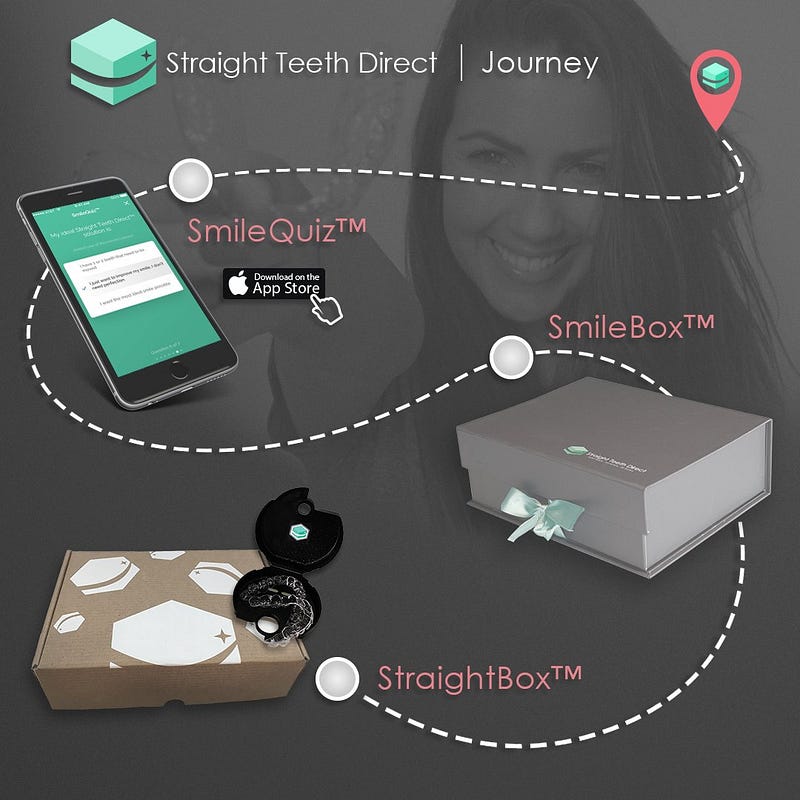
The A.I Orthodontist needs to be able to evaluate cases in 2D and 3D.
2D understanding
In orthodontics when planning movements or placing brackets on teeth some clinicians draw the centre points on the teeth to orientate themselves. Here you can see an image where the centre point has been marked on the teeth. This is part of understanding where forces need to be applied to.
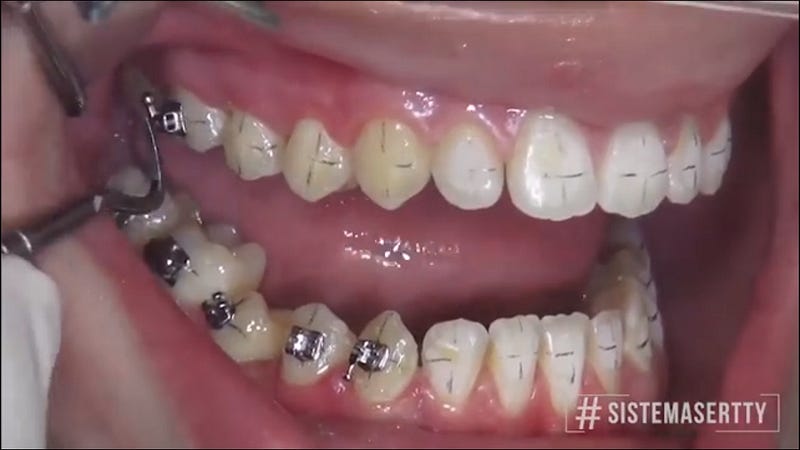
So if we needed the A.I system to be able to understand initial smile proportions and tooth positions it would need to recognise these as well before it could derive meaning from it.
Here we can see the same situation digitally managed – with the computer vision system we are training our system to understand and landmark these elements non-invasively.

Ok so 2D understanding is one thing but what about more detailed understanding, precise tooth positions and relationships…can A.I help with that too?
3D understanding
This is a 3D scan of a model of teeth. It is obtained by scanning the impressions the patient took from their SmileBox™ (which was posted to them at home)
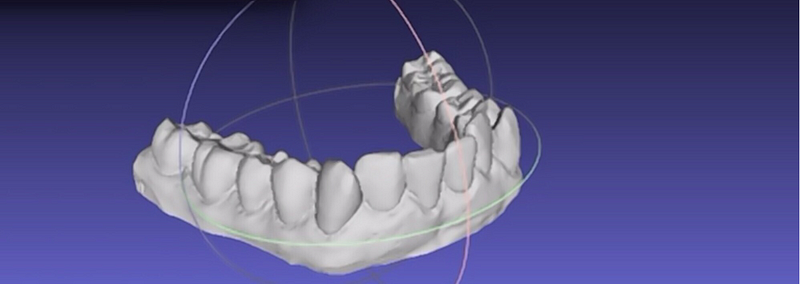
The model is a monobloc in the file – this means it is seen as one object.
There is no concept of teeth, gums or jaw. So how can the A.I algorithm possibly analyse this automatically?
Have a look at this screen below – this shows the algorithm in the process of learning what teeth are. Teeth are mathematically collections of edges, borders and contour gradients. This can be taught to the system so that it can then begin to grasp these concepts.
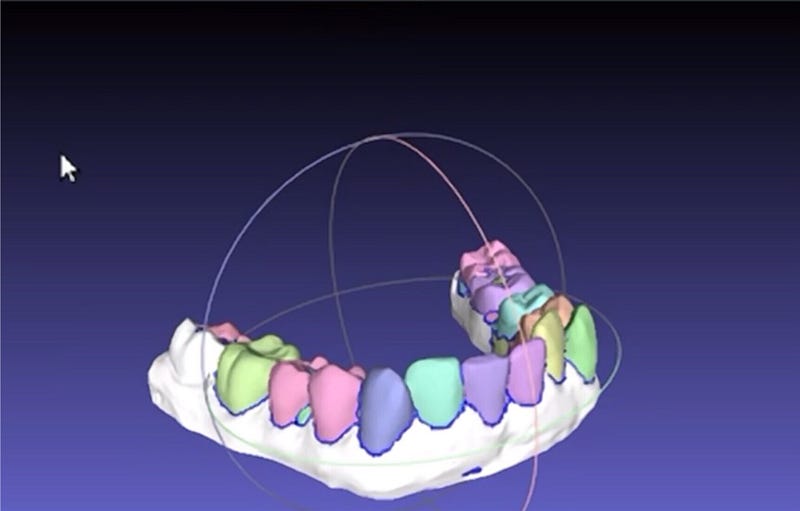
Here we are applying a training algorithm to help it understand what teeth are. The first step is understanding (seeing) then planning and doing can develop from there.
The outcome of this is that the algorithms are being trained with verified data which provides a perfect feedback loop. As the system can track outcomes and get better over time. This results in a higher accuracy and therefore less clinician time leading to lower costs.
The learning feedback cycle is shortened thanks to the rapid feedback. Normally orthodontists will only get data once every 6–8 weeks and this is then only reviewed intuitively not objectively. There is currently no objective measurement of progress and forecasting system in place for monitoring progress in most dentists practices. The Straight Teeth Direct A.I system as it develops will help the orthodontists use their time more efficiently and helps younger dentists / orthodontists have the power of a powerful A.I helper being trained to help them.
Artificial Intelligence has the ability to revolutionise any healthcare industry to make healthcare more accessible and affordable. Then when A.I is used alongside other exponential technologies truly incredible things can be possible.
We are just at the dawn of this new A.I supported cognitive model of healthcare and we are excited to be applying it in dentistry & orthodontics.

